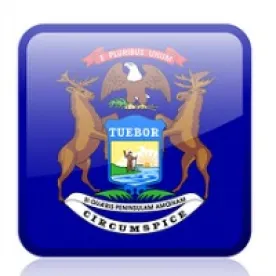Environmental consultants and homeowners on the Great Lakes should be aware that Michigan law actually encompasses two "ordinary high water marks" (OHWM). The notion that two different OHWMs exist seems implausible, and may cause confusion to property owners who are navigating their rights to address the record-high water levels of the Great Lakes. Thus, understanding the distinction is more important now than ever.
The OHWM for Purposes of the Public's Right to Walk Along the Edge of the Great Lakes
The first OHWM comes from the Michigan Supreme Court Case Glass v. Goeckel (2005). This is, in a sense, the more "natural" definition of the two. Ms. Glass sued the Goeckels because the Goeckels interfered with Ms. Glass's ability to walk on the beach in front of Goeckels' property. The Court sided with Ms. Glass, holding that Ms. Glass had the right to walk on the beach, as long as it is below the OHWM.
In this instance, the Court defined the OHWM as "presence and action of the water" marking the land "distinctly" from the upland that is "apparent" in the soil, surface, and the vegetation. So long as Ms. Glass (and any other member of the public) walked below this OHWM, she could walk up and down the shoreline as she pleased, regardless of who owned the property above the OHWM.
The OHWM That Governs the Right to Install a Sea Wall
Record high water levels have prompted many shoreline property owners to protect their property by installing sea walls or similar types of protection. To do so, however, a property owner needs the requisite permit if the construction occurs below or lakeward the OHWM. Under Part 325 of Michigan's Natural Resources and Environmental Protection Act, a property owner needs a permit "before spoil or other material may be placed on Great Lakes bottomlands[,]" which is land lying below and lakeward of the OHWM.
Understanding the Part 325 OHWM is particularly important because EGLE has no jurisdiction to require a Part 325 permit for a sea wall above and landward of the OHWM. Part 325's OHWM is set forth by statute. Following the International Great Lakes Datum of 1955 (the "Datum"), Part 325 sets the OHWM at 601.5 feet for Lake Superior; 579.8 feet for Lakes Michigan and Huron; 574.7 feet for Lake St. Clair; and 571.6 feet for Lake Erie.
However, there is a twist: The 1955 Datum no longer exists due to shifts in the earth's crust. It was updated in 1985. Consequently, the elevation above sea level for Lake Michigan is now 580.5 feet (according to the International Great Lakes Datum of 1985) for purposes of Part 325's OHWM.
The importance of understanding the OHWM under Part 325 was recently highlighted in a legal dispute over a property owner's installation of a sea wall. A shoreline property owner installed a seawall above and landward of Part 325's OWHM. Out of an abundance of caution and perhaps not knowing the difference between OHWMs, the property owner nonetheless applied for (and received) a permit under Part 325. Neighboring property owners filed an administrative challenge, alleging the sea wall violated Part 325. The Part 325 challenge failed because the property owner technically did not need a permit under Part 325, and thus there was no basis to challenge the sea wall under Part 325.
Private property owners as well as the general public should know these important distinctions in matters involving the OHWM of the Great Lakes.




 />i
/>i

